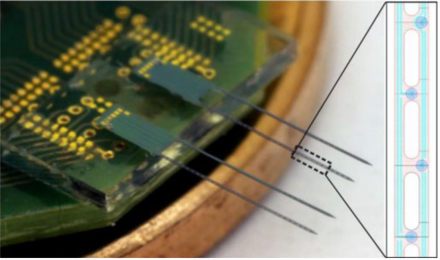
The articles cover a wide range of topics related to BRAIN Initiative goals, from multi-scale neural recordings to deep brain stimulation to technologies for recording activity in human brains such as EEG and ECoG.
The journal IEEE Transactions on Biomedical Engineering devoted their March issue, 22 articles in all, to BRAIN Initiative research. “These articles reflect a rich spectrum of BRAIN research on neurotechnologies for recording, imaging, interfacing and modulating the brain at multiple scales,” write the editors.
The articles describe research conducted by grantees of several BRAIN Initiative federal partners, including NIH, NSF, DARPA, and IARPA. The issue also includes papers by industry partners such as NeuroNexus. In addition, the issue reflects the global effort to understand the brain, with authors residing in the U.S., Australia, Belgium, Canada, Ireland, Italy, South Korea, Thailand, and the U.K.
NIH BRAIN Initiative grantees contributed the following three articles:
- “Chronic in vivo evaluation of PEDOT/CNT for stable neural recordings” by BRAIN grantees Kensall Wise and Euisik Yoon and colleagues. This paper discusses the design of a new type of coating for ultra-small microelectrodes. Although ultra-small microelectrodes can be used for long-term recordings, they tend to have high impedance, which makes them unable to isolate electrical signals from individual neurons. Wise and Yoon et al. developed a poly(3,4-ethylenedioxythiophene) (PEDOT) coating doped with carboxyl functionalized multi-walled carbon nanotubes (CNTs) that effectively lowered electrode resistance to allow single neuron recording. The PEDOT/CNT coating resulted in chronic recordings that were more stable and longer lasting than the current state-of-the-art coating for these types of microelectrodes.

- “Combined Single Unit Neuron Activity and Local Field Potential Oscillations in a Human Visual Recognition Task” by Gregory Worrell and colleagues. This paper compares the action potentials from single neurons and the local field potential—a measure of activity averaged across many neurons—measured with intracranial hybrid electrodes in epilepsy patients performing a recognition memory task. Worrell et al. found that local field potential oscillations were more sensitive to novel images and affectively charged versus neutral images than single neurons.

- “Close-Packed Silicon Microelectrodes for Scalable Spatially Oversampled Neural Recording” by BRAIN grantee Ed Boyden and colleagues. This paper describes the design and implementation of close-packed silicon microelectrodes. The probes are fabricated in a hybrid lithography process, resulting in a dense array of recording sites connected to submicron-dimension wiring. Boyden et al. demonstrated their microelectrodes in mammalian brain recording sessions, using a series of probes comprising 1000 recording sites, each recording from an area roughly 9 microns X 9 microns.

All of the IEEE Transactions on Biomedical Engineering articles are available here.
.
